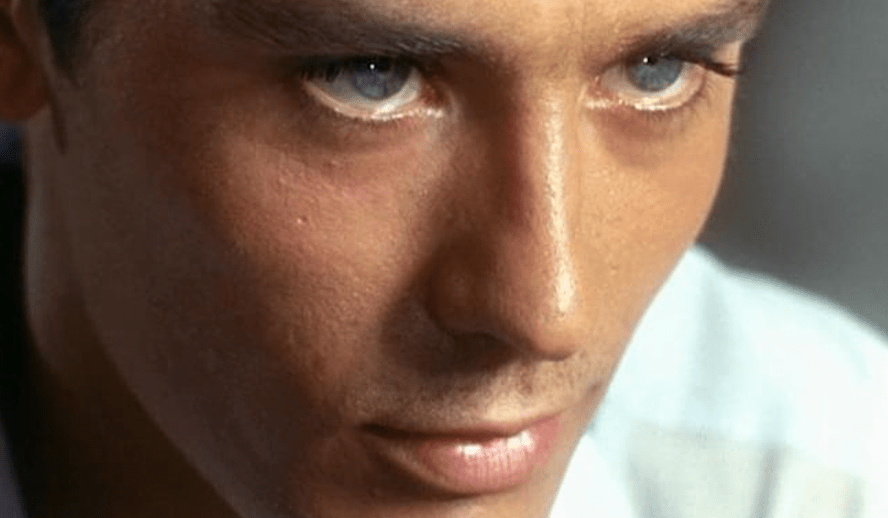Table of Contents

Photo: ‘Purple Noon’
The Clock Strikes Noon Again
Anybody who has seen a shark – anyone who has really read its eyes – knows that it doesn’t matter that sharks don’t tend to eat humans. The reality is, what’s always been so terrifying about sharks is that behind their glassy, vacant, senseless eyes, you have barely even registered in their mind. It feels as if at the slightest provocation they could be convinced to swallow you whole, but they might just as well swim past without a second thought. In a word, they are indifferent, eerily so.
Related article: The Hollywood Insider’s CEO Pritan Ambroase: “The Importance of Venice Film Festival as the Protector of Cinema”
Related article: The Masters of Cinema Archives: The Hollywood Insider Pays Tribute to ‘La Vie En Rose’, Exclusive Interview with Director Olivier Dahan
Related article: – Want GUARANTEED SUCCESS? Remove these ten words from your vocabulary| Transform your life INSTANTLY
Tom Ripley, the peculiar and vicious character invented by Patricia Highsmith, is interesting for this self-same reason. He is not malevolent in the sense of a meticulous, ‘evil mastermind,’ but rather as a complete free agent who acts on whims and impulses alone. There is a radical and almost unspeakable beauty in this freedom, though at its core it petrifies us. In the words of Geoffrey O’Brien for Criterion, “the essence of Highsmith’s character [is that] that he discovers himself as he goes along, and finds his way into murderousness through a kind of innocent and delighted improvisation.”
The first and likely most famous of Highsmith’s ‘Ripley’ books is ‘The Talented Mr. Ripley’ (1955). Of the two film adaptations of the story, you’ve likely only heard of the 1999 version starring Matt Damon and Jude Law. Unfortunately, Damon’s interpretation of Ripley does not capture his intoxicating amorality like Alain Delon does in the earlier of the two adaptations, ‘Purple Noon’ (1960). Nevertheless, this René Clément-directed thriller never really made the splash it ought to have done abroad, and neither did its contemporary French popularity guarantee continued viewership. Unfortunately, the film has largely faded into obscurity.
However, thanks to its cult following, it was eventually plucked out from oblivion by none other than Martin Scorsese, a fan of the film, who helped get it restored and re-released in 1996. Since then, another restoration was undertaken in 2012, funded by StudioCanal, and the updated version was released by the Criterion Collection. Despite all this, it goes without saying that ‘Purple Noon’ is hardly the title on everybody’s lips, though it has seen an encouragingly steady rise in popularity. It is for this reason that it is time to re-evaluate what could easily be considered a classic. Indeed, with fresh eyes, it’s hard to see why Clément and ‘Purple Noon’ were not welcomed by nouvelle vague directors and audiences. With an overriding sense of moral ambiguity, influence from existentialism, snappy and innovative editing, and several stars associated with the movement, the film could easily be classified as new wave.
Related video: Come Behind The Scenes of ‘Elvis’ | Austin Butler, Tom Hanks and Baz Luhrmann
Moreover, considering the film was shot by legendary cinematographer Henri Decaë, DOP for ‘Elevator to the Gallows,’ ‘The 400 Blows,’ and ‘Le Samouraï,’ I shouldn’t need to convince you that the stunning setting (and protagonist) of ‘Purple Noon’ is captured beautifully and eloquently on celluloid. This is not even to mention the intelligently structured and frequently inventive score from Nino Rota, who famously soundtracked ‘The Godfather’ (1972) and ‘La Dolce Vita’ (1960).
‘Purple Noon,’ beyond any of these adorning features, harbors a sort of magic within, something of the kind neither ‘The Talented Mr. Ripley’ (1999) nor most other films can muster. Now that it is picking up steam due to being more widely available, I am taking a fresh look at the film, hoping to unveil the rabbit beneath the hat; that thing that makes it so superior to the more recent version.
Fast and Bright: The Cinematography of ‘Purple Noon’
If ‘Call Me by Your Name’ (2017) felt breezy and free-spirited to you, ‘Purple Noon’ will feel almost unscripted. With the same airy, Italianate, sun-baked languor, ‘Purple Noon’ seems to move its plot forward with little care for where it will go, even though the film’s perfect pacing reveals otherwise. This vivid sense of loose spontaneity is what makes the film fun, but it is also what makes Tom’s unpredictability so convincing.
Hearing from the director, we get some picture of how this effect might have been achieved. “There was a certain amount of improvisation during the shoot,” Clément said in a 1981 interview. “Paper and writing are very cut-and-dried,” he continues, “a script is like a score that is missing any indication of tempo. You have to breathe life into it.” Clément’s willingness to allow chance to intervene in the making of the film contributes substantially to the uninhibited aesthetic of the film and accords neatly with its thematic content. Certainly, this openness to the impact of fate on the filmmaking process is part of what forms the inimitable mystique and charm of ‘Purple Noon.’ Moreover, a liberated approach to plot, although leading to significant deviation from Highsmith’s original text, actually succeeds in achieving a much more faithful adaptation. Something about the airiness of the film and its ability to transcend the constraints of the novel means that although it is not at all identical to the book, it is a superbly faithful rendering in the sense of mining the heart of the material to the fullest extent.
Related article: MUST WATCH – The Hollywood Insider’s CEO Pritan Ambroase’s Love Letter to Black Lives Matter – VIDEO
At the same time, much of what feels natural and unplanned within the movie is actually the product of intense care and forethought. The tableau we see after the murder of Freddy Miles (Billy Kearns), for example, may look messy and coincidental, but it’s anything but. First, we are given a touching contrast to the death which has filled the interior space. Tom looks out the window and watches as children play games, full of youth, life, and sunlight. Both Tom and the scene he stares out at look utterly serene. Tom’s gaze shifts, though. We see Miles dead on the floor, his status apparently no higher than the tomatoes littered around him, or the chicken carcass sprawled ridiculously nearby. Imogen Sara Smith remarks on both the beauty of the scene and the fact that it’s also ‘morbidly funny,’ the chicken somehow parodying Miles. Easy to miss, also, is that Tom takes a piece of paper from the desk as he walks over to Freddy, scrunching it up and discarding it before he’s even fully picked it up. Brutally, we are reminded again of Tom’s senseless profligacy; I compare his profligacy of resources and life as if they are the same only because to him, they are.
Clément said that “Purple Noon is the kind of film you make passionately, where every detail counts,” and this is evident. Every fine detail succeeds in appearing incidental but adds immensely to the general feeling and perception, both of Ripley and the film as a whole. Indeed, Clément was committed enough to create the sounds of the sea himself at home on a tape recorder when he couldn’t get sound effects from Hollywood. Indeed, even the title sequence is lovingly made, with a stunningly chic hand-drawn title card from Maurice Binder, famous for creating the title sequences for fourteen ‘James Bond’ films, starting with 1962’s ‘Dr. No.’
Shots that don’t attempt to move the plot forward frequently bookend central scenes, amplifying the sumptuous beauty of the film and expressing its theme of aestheticism. Some particular highlights are wonderful panning shots of the characters’ paraphernalia, and the close-ups of eyes that Clément inserts of Delon and Laforêt. One senses, with these transfixing moments focussed on eyes, the incredible opaqueness of the window to the soul. Despite being this close, one still cannot see, truly, what strange machinations stir within.
Things to do:
- Subscribe to The Hollywood Insider’s YouTube Channel, by clicking here.
- Limited Time Offer – FREE Subscription to The Hollywood Insider
- Click here to read more on The Hollywood Insider’s vision, values and mission statement here – Media has the responsibility to better our world – The Hollywood Insider fully focuses on substance and meaningful entertainment, against gossip and scandal, by combining entertainment, education, and philanthropy.
These thoughtful touches elevate the movie in a way that separates it from 1999’s ‘Mr. Ripley.’ This is helped in no small part, of course, by the perfect color grading Decaë employs, which genuinely could not make Italy look better if it was shot through a lens of Murano glass.
The True Mr. Ripley
Those who’ve seen either version of the film will be surprised to hear that in the source material, Ripley is so successful due to his plain features which make him forgettable. Though Matt Damon is less striking than Delon, it would be hard to argue either of the two looked ‘average.’ This is undeniably an improvement, though. Tom Ripley is a mercurial figure; he should feel almost non-human. Being so average as to be extraordinary likely would not achieve this especially well – at least not on screen. The fact that he was relatively unknown at the time was vital too, since this deprived audiences of the ability to project their own ideas onto Ripley, instead leaving them struggling to make head or tail of him. Viewers should feel as if Ripley is impenetrable and impossible to understand, and for him to be superhumanly good-looking is central to this.
It is this enchanting sprezzatura that Alain Delon is so uniquely adept at emanating. Not only does his careless charm make his character more alluring to the viewer and thus more interesting, but it also works better in making the character of Tom Ripley convincing. He succeeds because his nonchalance – his unconcerned grace – is so disarming. The people Tom dupes believe him because he seems so unfussed as to whether they believe him or not. Delon plays it like he doesn’t even want the money in the first place – like none of it really matters, and thus wins over not just those around him but us too. We find ourselves inexplicably rooting, even just slightly, for the sociopathic murderer. His cheekiness with Philippe (Maurice Ronet), however artificial, only adds to this, making him feel genuinely innocent, good-hearted, and harmless – as if he doesn’t really know what he’s doing – however untrue that may be.
Related video: EVOLUTION: Every Tom Cruise Role From 1981 to 2021, All Performances Exceptionally Poignant
Related article: A Tribute to Johnny Depp: The Actor and Musician Who Defined Range
What is so perfect about Delon’s portrayal is that all of this is also in service of the larger symbol of the tale: false beauty. Delon is dazzlingly beautiful but staggeringly evil. Appropriately, the image we are confronted with for a fair portion of the film is one of a beautiful boat, sitting within a beautiful landscape, holding beautiful people, two of which are arguing with each other, and two of which will soon become murderer and victim. Everything is surface and nothing has substance. Indeed, Delon, the marine landscape, and the ship all look their worst directly after the murder. A storm comes, and the latent evil froths to the surface in everything. When Delon re-enters the ship after killing his companion, he’s a different person. Leaping down the stairs with the grotesque sprawling gait of an arachnid, he scrappily peels a shirt on, half-folded over itself at the back, and devours a peach like a starved animal. For a minute, his composure lapses entirely and we see Ripley in essence. The way Delon sheds his svelte and restrained charm so suddenly and utterly is a marvel. One could swear his body changes shape.
‘Purple Noon’ even extends this central metaphor of beautiful surface and terrible interior to the film’s aesthetic as a whole. Shot in vibrant color, almost in the manner of a travelogue, we only see its dark and seething core for brief snatches or if we squint hard enough and remind ourselves that we ought not to share in Ripley’s amorality. Interestingly, this evil almost always comes from the symbolic deep: the ocean. Not only does the first murder take place on the boat, but it is also to a fish market that Ripley goes after the event. Strolling through the stalls, he stares, absorbed, at the ghastly faces of string rays, seeming at peace among the terrors of the deep. The ocean, of course, is also where Philippe’s body will appear from at the end of the film, which will form part of the perfect encapsulation of the film at its end. When the corpse surfaces, we cut from a shot of Philippe’s grotesque, bloated, discolored hand spilling awkwardly from his body bag, to Tom’s vivid, statuesque, slender hand putting a shot glass to his lips for the tiniest, most delicate of sips. Beauty on the surface, horror emerging from below.
Related video: EVOLUTION: Every Johnny Depp Role From 1984 to 2020, All Performances Exceptionally Poignant
Related article: A Tribute to the Hero & President Volodymyr Zelenskyy: Comedian/Actor, Ukraine’s President and Heroic Leader
Perhaps the central joy of the film, or at least the chief tension, derives from spectating as this inner evil blooms in awful fashion. He may not change as the film progresses, but he develops, allowing the desires within him to find their infernal voices where before they’d lay tongueless. Fortunately for the viewer, this does not happen gradually, but in one cataclysmic event, where Tom kills Phillipe and realizes that anything is permitted. The possibilities of the nihilism he already harbored become irresistible.
The Other Mr. Ripley
Wisely, in the more recent Anthony Minghella adaptation, Matt Damon does not attempt to replicate Delon’s sprezzatura, since he could not have pulled it off. Instead, he attempts a more neurotic, slightly jittery, but charming personality. Although this was the right decision under the circumstances, it highlights the weakness of the casting decision that this change was necessary.
Perhaps the most significant misstep of ‘Mr. Ripley’ comes in its opening few minutes, though. By placing a moment of vital decision and transformation right at the start, where Tom decides to lie about being a Princeton alum, the beautiful tension and magnificence of the moment of blooming and shapeshifting is lost because there has been no build-up to it. All sting and spectacle are absent. Any future moments of transformation also lose their potency because we feel that Tom is already far down the path, so further strides are not surprising. It ought to feel, as it does in ‘Purple Noon,’ like a Camus-esque moment of revelation and madness that is one-half crazed and one-half an exposure of the core of who you really are.
Through this mistake, Minghella loses a fair amount of the symbolic richness of the story, as well as a good deal of Tom’s mystery. By making the process of his transformation so visible and external, we feel we understand who he is fairly well. To make matters worse, many of the strange idiosyncrasies which Clément injected into his film which serve to further confuse us about Tom’s nature are not mirrored in Minghella’s movie. Touches such as Ripley’s penchant for devouring food after killing are not replicated or replaced in any way. True, it requires a certain boldness to include such bizarre sequences, but this is a necessary part of telling stories as provocative as ‘Ripley’; a boldness not absent from ‘Mr. Ripley,’ but lacking.
Related article: #metoo Revolution: Powerful Questions That Need Answers
Related article: FACT-CHECKED Series: Timothee Chalamet and 32 Facts about The Young Superstar
One gets the sense that Minghella tried to make up for these weaknesses of characterization and visual richness with words. Though one cannot take as much from what one sees in ‘Mr. Ripley,’ certain passages of the script are admittedly vibrant. For one example, Tom’s repetition to himself of the phrase “this is my face” near the beginning of the film is a neat and well-integrated means of foreshadowing his deceitfulness concerning his face and identity. Indeed, this wordiness is a key difference between the two adaptations, as Delon seems not to require speech to communicate his character’s intelligence and mysteriousness, while Matt Damon frequently requires dialogue to ensure his character is believable and fleshed out. Again, I don’t entirely blame Damon for this – he does an admirable job and is an undeniably talented actor, but though his line delivery packs more punch than Delon’s, he is not nearly as naturally expressive with his face and body. This primal physical articulacy is necessary to fully embody Ripley. Without it, Damon requires heavy-handed and unsubtle methods to communicate the ideas which the story demands be communicated. Unsurprisingly, this detracts from the magic latent within the story. Reliance on dialogue – on telling rather than showing – betrays a certain uninventive and planned-out aspect to the film, making it not quite as fun, sentimental, or buoyant as ‘Purple Noon.’
Similarly, Matt Damon’s slightly self-conscious rigidity, perhaps supposed to depict meticulous but naïve deceptiveness, makes it significantly harder to believe in his amorality. His evident insecurity around Dickie (the equivalent of Phillipe), in particular, humanizes him to a degree inappropriate to the character of Tom Ripley. Unlike Delon, too, Damon was well-known before ‘Ripley.’ We’d all seen him two years earlier in ‘Good Will Hunting’ (1997), where he also played a capable kid who worked at a university but didn’t have the money to study there. In fewer words, our perception of a character who is supposed to be chameleonic and indefinable is colored deeply by the films he’d starred in before.
Related article: EVOLUTION: Every Henry Cavill Role From 2001 to 2021, All Performances Exceptionally Poignant
Related article: EVOLUTION: Every Chris Evans Role From 1997 to 2020, All Performances Exceptionally Poignant
In defense of the 1999 movie, it’s not trying to do all the same things as the 1960 French film; it’s more straightforward of a thriller than ‘Purple Noon’ and doesn’t attempt to be quite so primal. What it succeeds in is elevating Tom and Dickie to the level of tragic figures – archetypal figures of deceit and envy – but while importing some gravity, this sucks a little of the fun out, and leaves the film a good deal less visceral. With its cautious illustration of gradual decline as opposed to sudden cataclysm, Tom Ripley becomes a very different beast; far closer to a very human Frank Abagnale than an almost inhuman Mersault.
Eclipsing ‘The Talented Mr. Ripley’
The central joke, and perhaps the chief revelation of Highsmith’s story about Mr. Ripley is that Tom and Dickie/Phillipe are both just as deceitful as each other in their own way. To Minghella’s credit, there’s a strong argument to say that his film portrays this best, with its far more detailed portrayal of the shallow Dickie. Nevertheless, the central fun but also the chief horror of the story is the ever-present possibility that maybe none of that matters anyway – that Tom’s nihilism is justified – and ‘Purple Noon’ achieves this perfectly.
‘The Talented Mr. Ripley’ is not as complex or subtle as ‘Purple Noon,’ and it is not as well shot or acted. Still, it captures something of the original text and serves as an enjoyable thriller with flashes of something deeper. But the primal, free-flowing and existential pulse of ‘Purple Noon’ makes the overcalculated and heavy-handed execution of ‘Mr. Ripley’ hard to stomach. As James Berardinelli put it, “Matt Damon might make a credible Tom Ripley but only for those who never experienced Alain Delon’s portrayal.” Once you’ve been enchanted by the magic of Clément’s sweltering, enigmatic, forgotten masterpiece, what could otherwise be a great film feels inexplicably hollow and deficient.
By Samuel Sandor
Click here to read The Hollywood Insider’s CEO Pritan Ambroase’s love letter to Cinema, TV and Media. An excerpt from the love letter: The Hollywood Insider’s CEO/editor-in-chief Pritan Ambroase affirms, “We have the space and time for all your stories, no matter who/what/where you are. Media/Cinema/TV have a responsibility to better the world and The Hollywood Insider will continue to do so. Talent, diversity and authenticity matter in Cinema/TV, media and storytelling. In fact, I reckon that we should announce “talent-diversity-authenticity-storytelling-Cinema-Oscars-Academy-Awards” as synonyms of each other. We show respect to talent and stories regardless of their skin color, race, gender, sexuality, religion, nationality, etc., thus allowing authenticity into this system just by something as simple as accepting and showing respect to the human species’ factual diversity. We become greater just by respecting and appreciating talent in all its shapes, sizes, and forms. Award winners, which includes nominees, must be chosen on the greatness of their talent ALONE.
I am sure I am speaking for a multitude of Cinema lovers all over the world when I speak of the following sentiments that this medium of art has blessed me with. Cinema taught me about our world, at times in English and at times through the beautiful one-inch bar of subtitles. I learned from the stories in the global movies that we are all alike across all borders. Remember that one of the best symbols of many great civilizations and their prosperity has been the art they have left behind. This art can be in the form of paintings, sculptures, architecture, writings, inventions, etc. For our modern society, Cinema happens to be one of them. Cinema is more than just a form of entertainment, it is an integral part of society. I love the world uniting, be it for Cinema, TV, media, art, fashion, sport, etc. Please keep this going full speed.”
More Interesting Stories From The Hollywood Insider
– Want GUARANTEED SUCCESS? Remove these ten words from your vocabulary| Transform your life INSTANTLY
– A Tribute to Martin Scorsese: A Complete Analysis of the Life and Career of the Man Who Lives and Breathes Cinema
– Do you know the hidden messages in ‘Call Me By Your Name’? Find out behind the scenes facts in the full commentary and In-depth analysis of the cinematic masterpiece
– A Tribute To The Academy Awards: All Best Actor/Actress Speeches From The Beginning Of Oscars 1929-2019 | From Rami Malek, Leonardo DiCaprio To Denzel Washington, Halle Berry & Beyond | From Olivia Colman, Meryl Streep To Bette Davis & Beyond
– In the 32nd Year Of His Career, Keanu Reeves’ Face Continues To Reign After Launching Movies Earning Over $4.3 Billion In Total – “John Wick”, “Toy Story 4”, “Matrix”, And Many More
purple noon, purple noon, purple noon, purple noon, purple noon, purple noon, purple noon, purple noon, purple noon, purple noon, purple noon, purple noon, purple noon, purple noon, purple noon, purple noon, purple noon, purple noon, purple noon, purple noon, purple noon, purple noon, purple noon, purple noon, purple noon, purple noon, purple noon, purple noon, purple noon, purple noon, purple noon, purple noon, purple noon, purple noon, purple noon, purple noon, purple noon, purple noon, purple noon, purple noon, purple noon, purple noon

Outside of his ongoing MA degree in English and Philosophy at St Andrews, Samuel Sandor spends his spare hours writing – short stories, essays, articles on film, music, or any other subject he finds himself preoccupied by. Through all these strands, he strives to find a unique and unexpected way to look at the subject at hand. Without a concerted effort, it’s easy to form surface-level impressions of both the art and the news that one consumes. Sam’s pieces attempt to answer this interpretative simplicity by inducing curiosity in subjects one might ordinarily devote little thought to. It is this desire to transform viewpoints with novel ideas and to stoke deeper and more extensive conversations which attracted him to The Hollywood Insider.








